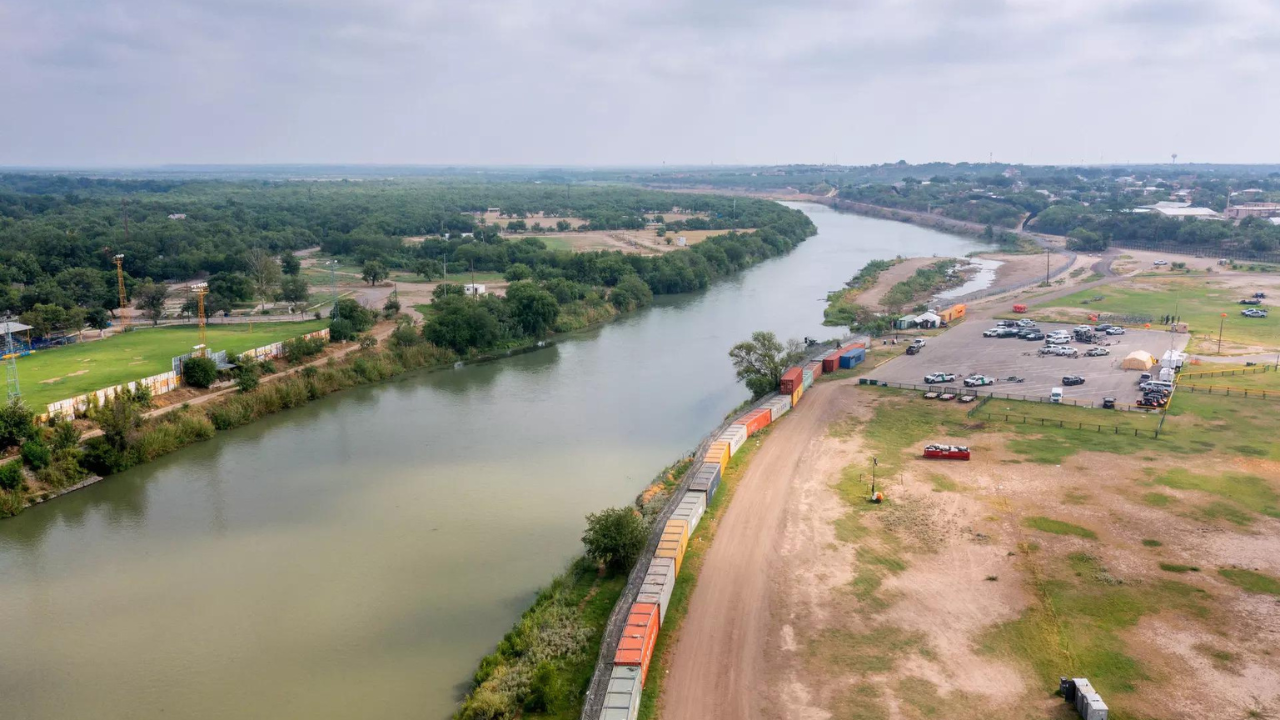A recently discovered ancient river in Antarctica, referred to as the Rio Grande, is providing new insights into the continent’s climatic history. This groundbreaking find is crucial for understanding how climate change has shaped the landscape over millions of years.
The discovery was made by a team of scientists from the University of Arizona, led by geoscientist Dr Stewart Jamieson.“The Rio Grande is unlike anything we have seen in Antarctica,” Dr Jamieson said. “This river system was buried under ice for millions of years and offers a unique window into the past.”
The Rio Grande, which rivals some of the world’s largest rivers, was identified through satellite imagery and radar data. The river’s channels stretch over 680 miles, and it likely played a significant role in transporting water and sediment across the continent during a warmer period in Earth’s history, a Newsweek report.
The presence of the Rio Grande suggests that Antarctica once had a much milder climate, with conditions that could support flowing water. This finding challenges previous assumptions about the continent’s glacial history and indicates that parts of Antarctica may have been ice-free during certain periods.
“The implications of this discovery are profound,” said Dr Jamieson. “It changes our understanding of the Antarctic ice sheet and its stability. Knowing that such a large river system existed implies that the ice sheet was much smaller than we thought.”
The research team plans to conduct further studies to determine the age of the river system and the climatic conditions that allowed it to form. These investigations could provide valuable data for predicting future changes in the Antarctic ice sheet in response to global warming.
The discovery of the Rio Grande also raises questions about the potential for similar hidden river systems in other parts of Antarctica. “We are just scratching the surface,” Dr Jamieson noted. “There could be other river systems buried beneath the ice, waiting to be discovered.”
As climate change continues to impact the polar regions, understanding the history of Antarctica’s ice and water systems becomes increasingly important. The findings from the Rio Grande will help scientists develop more accurate models of ice sheet dynamics and sea-level rise.
This discovery highlights the importance of continued exploration and research in Antarctica. It underscores the need for international collaboration to uncover the secrets of this remote and largely unexplored continent.
The discovery was made by a team of scientists from the University of Arizona, led by geoscientist Dr Stewart Jamieson.“The Rio Grande is unlike anything we have seen in Antarctica,” Dr Jamieson said. “This river system was buried under ice for millions of years and offers a unique window into the past.”
The Rio Grande, which rivals some of the world’s largest rivers, was identified through satellite imagery and radar data. The river’s channels stretch over 680 miles, and it likely played a significant role in transporting water and sediment across the continent during a warmer period in Earth’s history, a Newsweek report.
The presence of the Rio Grande suggests that Antarctica once had a much milder climate, with conditions that could support flowing water. This finding challenges previous assumptions about the continent’s glacial history and indicates that parts of Antarctica may have been ice-free during certain periods.
“The implications of this discovery are profound,” said Dr Jamieson. “It changes our understanding of the Antarctic ice sheet and its stability. Knowing that such a large river system existed implies that the ice sheet was much smaller than we thought.”
The research team plans to conduct further studies to determine the age of the river system and the climatic conditions that allowed it to form. These investigations could provide valuable data for predicting future changes in the Antarctic ice sheet in response to global warming.
The discovery of the Rio Grande also raises questions about the potential for similar hidden river systems in other parts of Antarctica. “We are just scratching the surface,” Dr Jamieson noted. “There could be other river systems buried beneath the ice, waiting to be discovered.”
As climate change continues to impact the polar regions, understanding the history of Antarctica’s ice and water systems becomes increasingly important. The findings from the Rio Grande will help scientists develop more accurate models of ice sheet dynamics and sea-level rise.
This discovery highlights the importance of continued exploration and research in Antarctica. It underscores the need for international collaboration to uncover the secrets of this remote and largely unexplored continent.
